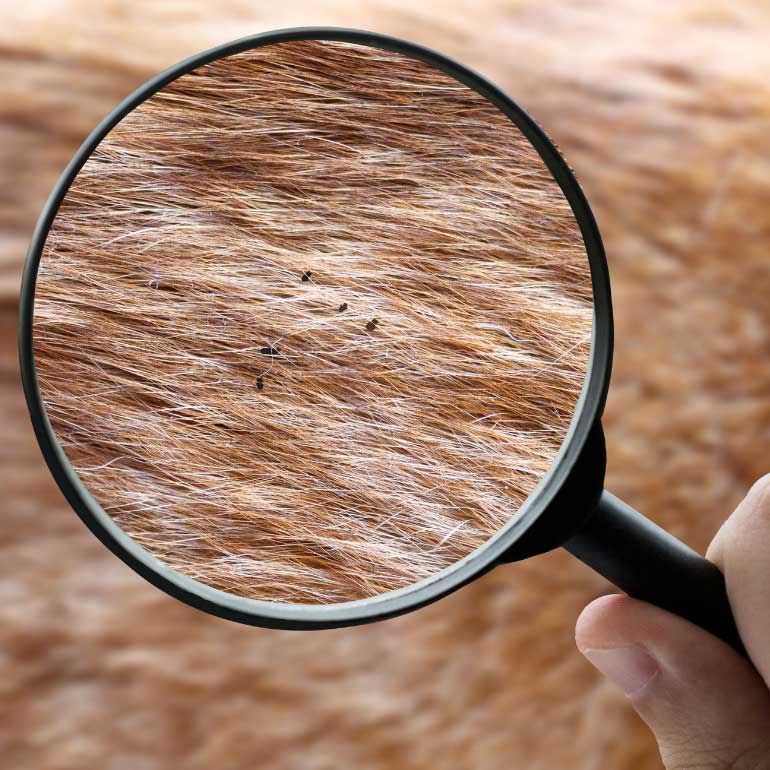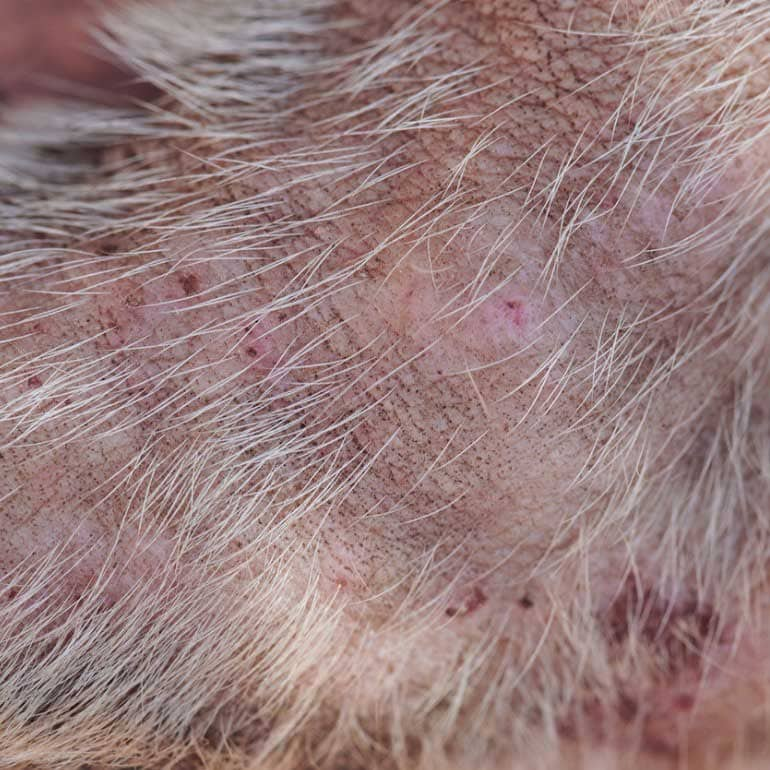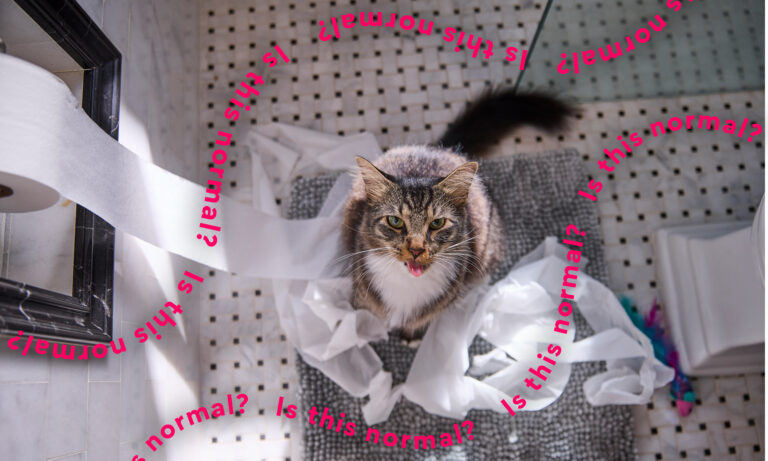So, you think you just found fleas on your dog or cat. It’s essential to take action—and fast.
We know detecting fleas on your pet can be a scary experience, especially since there are likely more of them inhabiting your pet’s fur—and areas in your home—incognito. To keep your pet healthy, it’s important to know what these crawly creatures look like first.
In This Guide
What Do Fleas Look Like?

Not sure if that speck you found on your pet or in your home was actually a flea? Here’s how to know if you found fleas on your dog or cat:
- They’re small. Fleas are itty bitty, wingless insects that are 3–4 mm long.
- They're darker in color. Fleas are generally reddish-brown or black.
- They’re oval-shaped. Fleas are oval-shaped, similar to ticks. (Although, ticks are larger.)
- They are most often found on your pet’s lower back near the base of the tail. Other common areas on dogs include the neck and belly.
- They like to jump. Fleas can’t fly since they don’t have wings. However, they can jump—high.
Finding adult fleas is just one way to learn your pet has a flea problem. Other ways can include spotting flea eggs, flea dirt, or flea bites, as well as symptoms like scratching.
What Do Fleas Look Like on Dogs and Cats?
Fleas on dogs or cats will appear dark brown or black and can move around easily along the skin and fur. You may think at first glance your pet has some dried flaky skin and will need to investigate further. It’s important to do regular flea checks on your cat or dog to catch fleas before they become a bigger issue.
What Do Flea Eggs Look Like?
While we wish we could find just a single flea, get rid of it and call it a day, the reality is fleas multiply rapidly. (A female flea can lay up to 50 eggs per day!). One of the keys to putting a stop to fleas is spotting and eliminating flea eggs.
Here’s how to know if you found flea eggs:
- They’re incredibly small. Flea eggs are around 0.5 mm in length, making them hard to spot with the naked eye.
- They look translucent. Flea eggs are a light, off-white color, making them difficult to see against light-colored surfaces,
- They’re oval-shaped. Flea eggs can look a lot like salt due to their shape, color and size.
- They can be found anywhere. Flea eggs can fall off their host since unlike fleas themselves, they aren’t sticky. Flea eggs can be found on a pet themselves but can also be found on bedding, carpets, or furniture.
What Does Flea Dirt Look Like?
Where there are fleas, there’s flea dirt…or flea feces.
Here’s how to know if you’ve found flea dirt:
- It looks like, well, dirt. Flea feces is essentially dried blood meal that fleas excrete after they’ve fed on the host. Flea dirt looks like small, dark brown specks or grains, resembling ground black pepper.
- It’s on your dog or in your home. The most common places to find flea dirt are the same places fleas themselves are most often found (e.g. on your pet’s bedding and the furniture).
- It leaves a stain the color of dried blood. A common way to confirm the presence of flea dirt is to place some of the specks on a damp white paper towel. Flea dirt will typically dissolve and leave a red or brownish stain due to the blood.
What Do Flea Bites Look Like?

Checking your cat or dog for flea bites can also confirm whether you’re dealing with blood-sucking nuisances.
Here’s how to know if you found flea bites on your pet:
- They’re red bumps. Flea bites can be uncomfortably itchy and may become swollen. The skin may also become red and inflamed, either due to your dog’s scratching or biting at the site, or because of an allergic reaction to the bite.
- There’s a group of small, itchy bites. Flea bites are often arranged in small clusters or lines.
- They show up anywhere on your pet’s body. Fleas will bite anywhere and everywhere on your cat or dog’s skin.
There are different species of fleas—the most common are cat fleas (Ctenocephalides felis) and dog fleas (Ctenocephalides canis), which despite their names can infest both dogs and cats, as well as humans.
Other Signs of Fleas on Dogs and Cats
Fleas and flea bites can also lead to your pet being extremely uncomfortable. If your dog or cat can’t stop scratching themselves, appear to be biting at their skin more than usual—this can also be a sign of fleas.
Your dog or cat may also develop flea-allergy dermatitis which is an allergic reaction to flea salvia. Although this isn’t a medical emergency, it will cause additional discomfort for your pet. In some cases, a pet may develop flea anemia with signs of pale gums, lethargy, or loss of appetite. These signs do warrant a phone call to your vet.
If you dog regularly attends doggy daycare or has been around other dogs, I’s important to check them after any outdoor adventures. Fleas can hop a ride on either your pup or your own clothing which means a flea infestation could be in your home.
And yes, even indoor cats can get fleas—as mentioned, these parasites can make their way inside your home easily, either through another pet or from you. Keeping your pet on year-round dog or cat flea medication is the best way to prevent these parasites in the first place.
If you have a puppy they will also need to be on flea prevention. Work with your veterinarian to determine which option makes sense based on their age and size.
The earlier you catch these pests, the less time they’ll have to multiply. And once you find fleas, it’s important to call your veterinarian to start treatment immediately.
Your vet will help you to determine a treatment plan based on your pet’s individual case while you also work to eliminate fleas from your home. The sooner the treatment the quicker to get your pet feeling comfortable and parasite-free again.
This content was medically reviewed by Jo Cornett, DVM, Chewy veterinarian.
Share:












